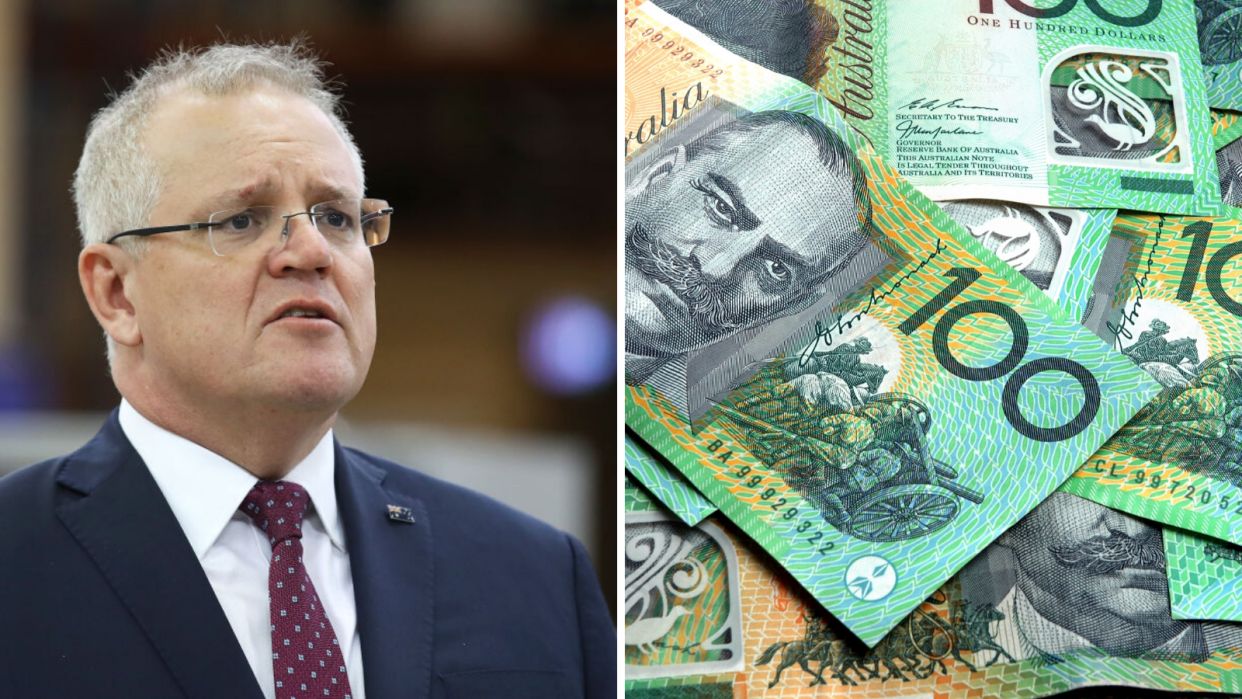JobKeeper extended until March 2021: What it means for you

The JobKeeper subsidy has been extended until March, but will operate at a reduced rate, the prime minister revealed on Tuesday.
Businesses receiving the payment will now be subject to a new turnover test, and a different rate will be applied for part-time and casual employees.
“JobKeeper is doing its job and will continue to do its job through the decisions we're announcing today,” Prime Minister Scott Morrison said on Tuesday.
“Already just over $30 billion has been provided in support through the JobKeeper Program to almost a million businesses - 960,000, thereabouts - supporting some 3.5 million employees.”
Morrison said the government’s review into JobKeeper found the scheme needed to continue, but it needed to become more targeted.
What’s changed?
The government’s review into JobKeeper found that around one-in-four Australians on JobKeeper were receiving a pay rise of, on average, $550 per fortnight. Over six months, that equates to a $6,600 pay rise.
It’s this situation that Finance Minister Mathias Cormann referred to as an “adverse incentive”.
“What the review also found was that there were a number of features of JobKeeper that created adverse incentives which may become more pronounced over time as the economy recovers,” Cormann said.
“This formed part of our considerations as we looked at the next phase of the JobKeeper program.”
To combat this, the government will have a two-tiered payments system: from 28 September until 3 January, the top tier will receive $1,200 per fortnight, and the bottom will receive $750. From 4 January until 28 March, the top tier will receive $1,000 per fortnight, and the bottom $650 per fortnight.
Here’s what it means for you.
Also read: $1,710 problem with JobKeeper
Also read: ‘Be vigilant’: End of financial year JobKeeper warning
If you’re receiving JobKeeper now…
The $1,500 per fortnight rate will continue until its legislated end date, which is 27 September.
Following that, the rate will be reduced to $1,200 per fortnight, or $750 per fortnight for those working less than 20 hours a week.
For the March quarter next year, that payment will be revised down to $1,000 per fortnight for those working full-time, or $650 for those working less than 20 hours a week.
If you’re a business owner…
To be eligible for JobKeeper, businesses will still need to show they have suffered reduced turnover of 30 per cent or 50 per cent depending on their size, and charities must show a 15 per cent reduction.
Treasurer Josh Frydenberg said employers would need to demonstrate that they have met the relevant decline in turnover in both the June and September quarters to be eligible for the JobKeeper payment in the December quarter, and again for the quarter to 31 December to be eligible for the payment for the following year.
This is part of the government’s attempt to keep the subsidy targeted, and to help businesses wean off support.
“As the economy gradually improves, Treasury expects that the number of JobKeeper recipients will reduce substantially,” Frydenberg said.
If you’re a sole trader...
Being a sole trader means you both apply for the JobKeeper payment as a business, and pay it to yourself as the employee.
This means you’ll still need to satisfy the requisite turnover tests for both the June and September quarter, and again for the quarter to 31 December to be eligible for the payment for the following year.
As a sole trader, it’s also likely you’re working more than 20 hours per week, meaning you will qualify for the top tier $1,200 payment.
If you’re a casual worker...
The JobKeeper review found casuals and part-timers who were receiving an increase in their income due to the flat-rate payment lacked the incentive to work further hours.
In a bid to stop that, the government will introduce a two-tier payment system.
So, if you are working less than 20 hours a week, you will receive the $750 per fortnight payment. For the March quarter next year, that will drop to $650 per week.
If you’re a part-time worker…
Like casuals, if you are working less than 20 hours a week, you will receive the $750 per fortnight payment. For the March quarter next year, that will drop to $650 per week.
If you’re a full-time worker…
If you work full-time hours, you will be eligible for the highest rate of JobKeeper - $1,200 per fortnight.
If you lost your job…
If you have lost your job, you will be eligible for the JobSeeker payment, which is $565.70 per fortnight.
The JobSeeker payment has been boosted to $1,115.70 per fortnight by a $550 per fortnight Coronavirus Supplement.
After September, this Supplement will be reduced to $250 per fortnight, meaning the total fortnightly payment available to unemployed Australians is $815.70.
Are you a millennial or Gen Z-er interested in joining a community where you can learn how to take control of your money? Join us at The Broke Millennials Club on Facebook!



